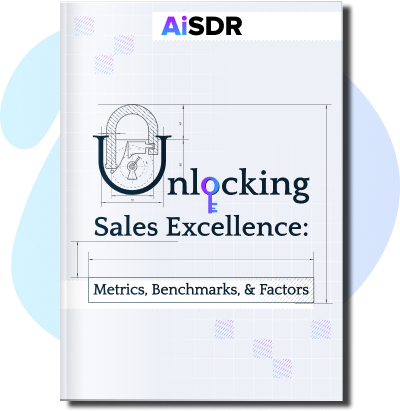How to Write Personalized Emails in 2025: 6+ Tactics for More Relevant Personalization

Find out how to make your personalization more effective in 2025
By ignoring personalization, you hand customers over to your competitors. Two-thirds of customers expect a personalized experience and tend to favor brands that actually deliver.
Email personalization is a must if you don’t want your messages to end up in the trash folder. What’s more, every touchpoint on the customer journey must be personalized to some extent. This makes the difference between emails that bring tangible results and those that only waste time and resources.
That’s why we’ll be going over 6+ email personalization tips that you’ll want to use in 2025.
What are the 5 levels of personalization?
The levels of email personalization for sales outreach can be divided into 5 distinct types, from basic customization of names and subject lines to more complex contextualization based on customer journeys.
Basic personalization
Basic personalization provides the minimum personal touch. This means making superficial personalization to the subject line, recipient’s name, content, recommendations, and promotional offers.
Segment-based personalization
Segment-based personalization involves dividing your audience into smaller groups, each representing a specific characteristic or demographic. A good approach to segmenting is to create your groups based on your ideal customer profiles (ICP).
Multimedia personalization
Multimedia personalization means creating an immersive experience by adding tailored images, videos, audio, and links. For example, you might embed an AI video into your first-touch emails. Just make sure not to flood your audience with too much content. This might take away from your message.
Hyper-personalization
Segmentation effectively factors in demographic, psychographic, and behavioral customer data. Hyper-personalization goes a step further by incorporating real-time interactions, contextualized customer journeys, behavioral patterns, and predictive data.
Behavioral personalization
Your email outreach can be built as a series of actions that respond to triggers and create sequences that make the exchange sound like a natural conversation. You can set up email responses, provide recommendations, and send follow-up messages based on behavioral triggers. This can be finishing a survey, completing a purchase, repurchasing the product, and engaging with a specific landing page.
Know your audience
No matter what level of personalization you pursue, you must know your audience—and know it well. It’s the only way to ensure you send truly relevant emails. Gathering and analyzing data is the go-to strategy to learn more about your target customers.
Collect customer data
There are several good ways to collect customer data to help drive your decisions. Here are some of the most common options:
- Surveys – To create an effective survey, you must set clear objectives, ask the right questions, and send them regularly or at certain customer journey touchpoints. A reliable survey tool like Google Forms or Zapier Interfaces will simplify the process.
- Lead forms – Use templates to collect information from qualified leads. Lead Gen Forms will help you gather information from LinkedIn users without asking them to leave the platform. Landing pages are another great tool to attract prospects and encourage them to fill out forms.
- Social media – Social media platforms like Facebook and Instagram provide insights into your audience. You can gather data on demographics, such as location, age, and interests, to see who engages with your pages and tailor your content accordingly.
Track and analyze the data
CRM software automatically collects information about your audience from surveys, lead forms, and social media platforms. You can use the system to track customer data, gain actionable insights, and boost your outreach campaigns.
Many CRM systems come with built-in personalization tools or the ability to integrate them with other software. For instance, you can connect your HubSpot to AiSDR and start outreach to your leads in HubSpot.
Update your personas
Creating personas is never a one-and-done deal. You should update them every time you source new information. Keeping personas up-to-date is an excellent strategy to ensure your campaigns stay relevant.
Segment your leads
Segmentation is a great way to personalize your emails at scale. It allows you to send one message to many recipients in a group that shares certain attributes and see whether it resonates.
As we mentioned earlier, creating segments that reflect your ICPs works best. This way, you can target a group of people most likely to turn into paying customers.
You can also zoom in on specific characteristics like people’s role in the company, purchasing behavior, and intent signals. For instance, you can create a separate segment for CEOs recently completing a funding round and purchasing software that integrates into your product.
AiSDR features a lead discovery engine that filters out contacts based on their jobs and the company’s hiring intent, funding history, and tech stack.
You can also create separate campaigns for new, returning, or disengaging customers. New customers will be open to offerings that complement their recent purchase (this strategy is called upselling or cross-selling). Welcome gifts can be a great way to engage returning customers, while discounts can help win back those who are becoming disengaged.
Leverage job-role specifics
Job roles are something you’ll need to consider when segmenting your audience for email personalization.
If you work in B2B sales, your goal is to capture decision-maker attention in your target companies. On average, this means speaking with up to five individuals.
Identify job positions most relevant to your product offerings. CEOs, CTOs, CFOs, department heads, and managers – all of them can end up on your list.
Then, personalize emails for each job position. Highlight how your product can solve issues specific to this or that role. If you target a sales operation manager, you can highlight how your tool makes the sales processes more efficient. And when emailing a finance officer, focus on cost savings.
Use lead-centric dynamic content
With dynamic content, you can easily create multiple versions of the same email tailored to different contacts.
Gone are the days when personalization simply meant addressing the recipient by name. Today’s email personalization tools automatically customize content to deeply resonate with each individual. AI-powered tools can highlight solutions and case studies relevant to your prospect’s industry, company size, or pain points.
AiSDR adapts email content based on the recipient’s profile, preferences, and stage in the buyer’s journey. It factors in their job role, recent interactions with the sales team, and any demos or webinars. Automated emails will reference that unique context. You can also use AiSDR to send bulk emails with promotional discounts adjusted to the company’s size.
Reference specific business challenges or opportunities
Truly effective personalized emails go beyond what’s happening in the company; they consider the broader market conditions. By mentioning regulatory changes or rising market trends, these emails establish relevance and credibility.
The most impactful emails highlight how your products have solved similar challenges for other companies, backing claims with concrete examples and data. They also share the company’s latest news and product launches, positioning your offerings as fuel for its clients’ growth.
Crafting hyper-personalized emails takes a lot of work. Fortunately, a good chunk of the process can now be automated. For example, AiSDR pulls a wide variety of data from different sources (lead databases, LinkedIn profiles, intent signals) to create messages that speak directly to leads and show you get them.
Run A/B testing
When personalizing multiple parts of an email, figuring out which elements drive results can be tricky. That’s where A/B testing comes in. You can create two emails that differ by just one variable—and test whether this specific change makes an impact.
Try experimenting with various email personalization styles, such as case-study-centric content vs. business-challenge-centric outreach. For example, you can compare an email highlighting successful case studies to one emphasizing the business challenges the target company may be experiencing.
The right tools can simplify A/B testing for your team:
- ActiveCampaign for running parallel tests and customizing metrics.
- MailChimp for segmentation and geolocation.
- Benchmark for testing several variables at once.
- AiSDR for trialing multiple email frameworks.
The more A/B tests you run, the better and quicker you’ll understand how to interact with your audience.











